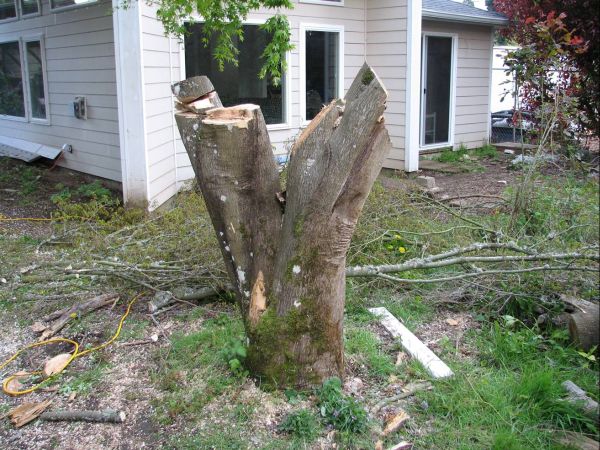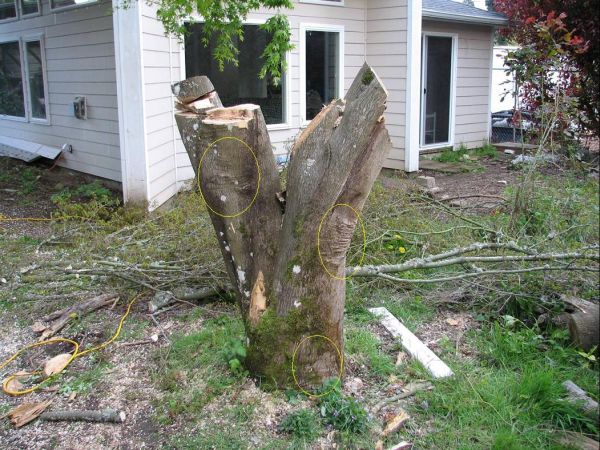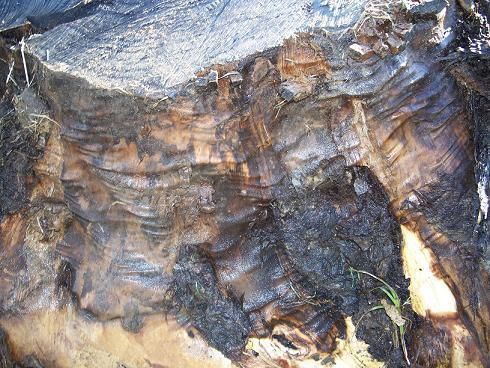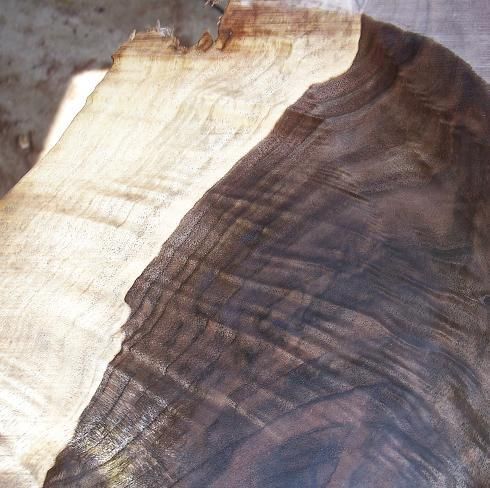Question
I'm a bit of a novice in the sawing and drying business - just recently found this website and it's very helpful. I've worked mostly with straight logs. I have a vine maple stump/crotch and I'm wondering if it's marketable (see photo). Maybe a wood turner? Is the crotch wood valuable? Or is it better served as firewood?

Forum Responses
(Sawing and Drying Forum)
From contributor D:
I see some difficulty in getting marketable crotch lumber from that stump. But I did circle a couple spots that have curly wood below the bark. A turner would surely be interested in those pieces... but it is a yard tree and turners don't like a nice fat nail right in the middle of a piece. Good turning tools are not cheap, and it is not safe to hit metal, period. I would run a metal detector over the whole thing first. If you get a lot of beeps, firewood would be my answer. Don't sweat it - there will be plenty more.

Crotch sections can be interesting, but they don't always show up well in a bowl, for example. Curly figure is always a good thing - I have gotten curly walnut and curly white oak, for instance, and those are not commonly available elsewhere.
Burls are good, and to answer your question, sometimes curl will show up in the bark, as will deep seated defects - they have a way of translating to the surface even if they are years old.
If that was mine to saw, I would make some vertical cuts to see what we were looking at, after scanning for nails, then if I liked what I saw, I would cut it off at ground level, take it home and turn it. I get all my wood for free, so even a walnut stump is not worth my effort if I have to pay for it. But that's just my business model...

This is what that stump looked like cut open. Guys who know and try to harvest mainly figured wood (like me) can tell curly/birdseye, for example, right through the bark. Or at least suspect it and give it a closer look. You have a piece of a yard tree with a couple little parts that should probably not be burned... the parts I circled. You may get a couple more pieces from one or two of the crotches. It may be a good experience for you just to try to harvest what you can and try to market it. That in itself will be a learning experience; it will let you know if it was even worth your time. That one would not be worth mine, but everyone is different.

I agreed to remove a 70ish year old walnut orchard, high graft (5'-7') black walnut stumps. I have been pulling the stumps out and transporting them to my farm. So far I'm at 100 of them. Some are rotted, but most have large bases. 3-4'. I am going to be cutting these soon and I am really interested in finding the highest value, and of course a market. Any suggestions? So far I have hauled 10 loads averaging about 4 tons/load. I have about 6 more to go. A couple loads are only three stumps at a time. Most are anywhere from 5-7 stumps per load. I have 6 stumps that my 5 ton capacity loader is straining to lift.